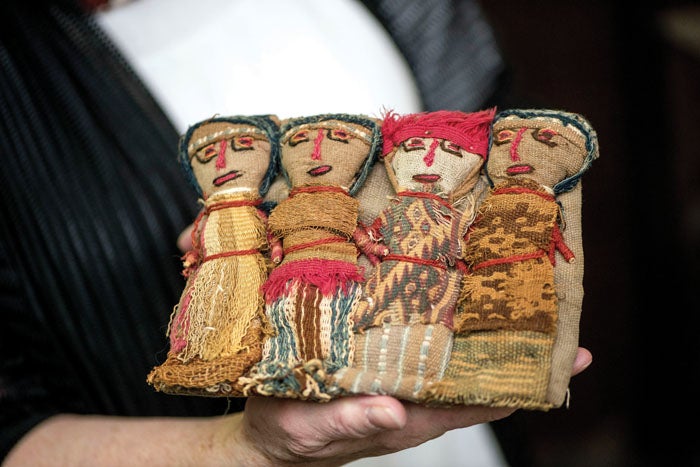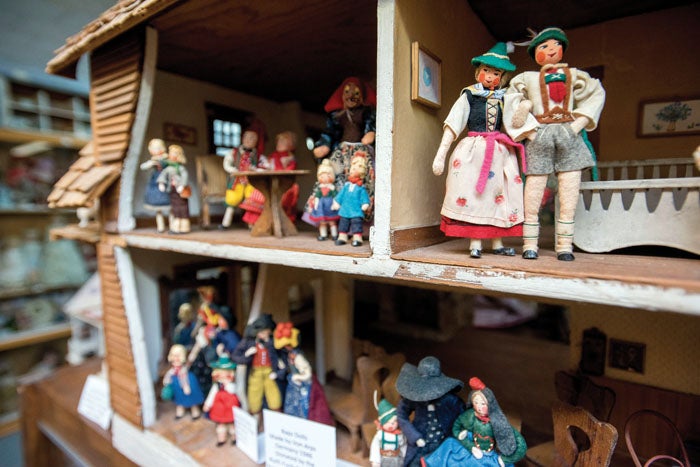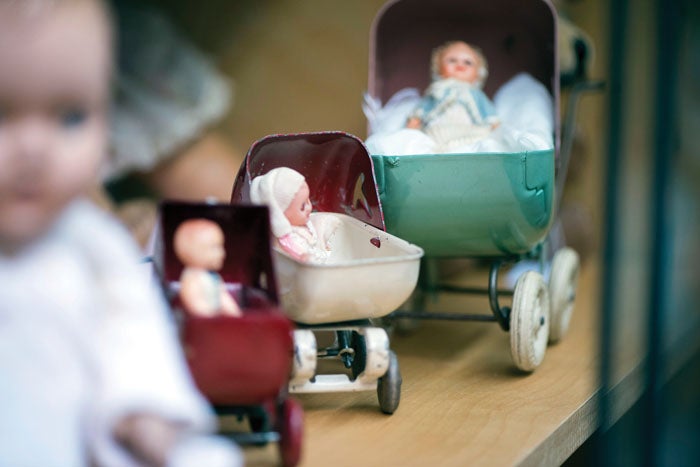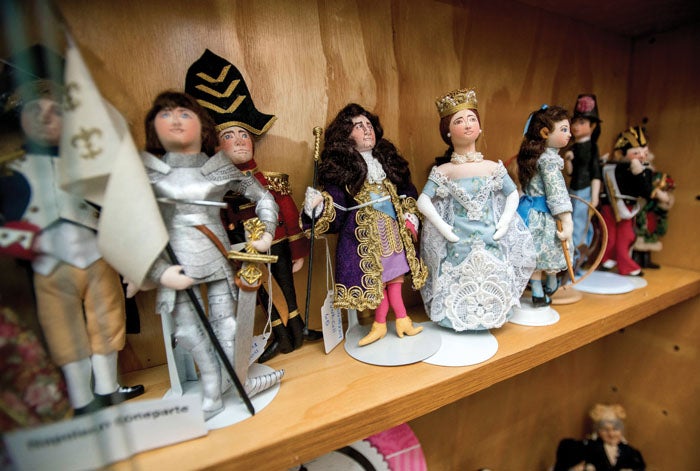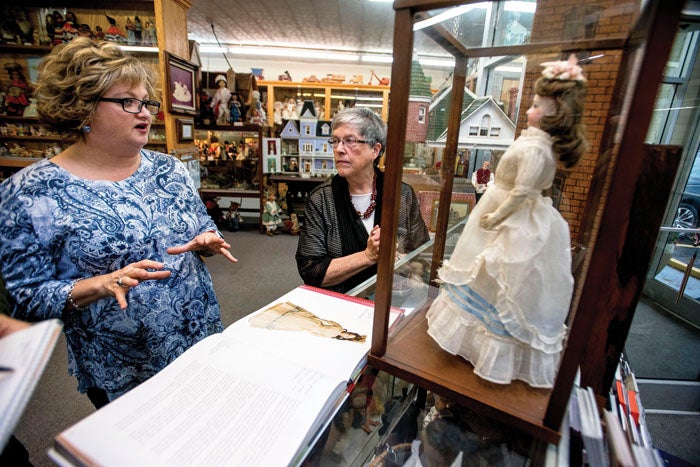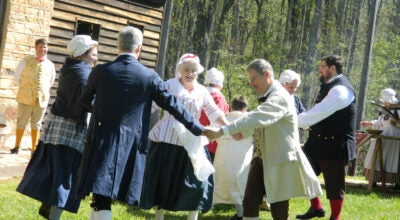Donation of Florida collection thrills N.C. Museum of Doll, Toys & Miniatures
Published 12:00 am Sunday, December 15, 2019
SPENCER — The dolls from the late Ruth E. Funk’s collection already have found a cozy home at the N.C. Museum of Dolls, Toy & Miniatures.
They represent the most impressive diversity of dolls the Spencer museum has ever received, and chief volunteer designer/curator Gayle Hansen already has found intriguing ways to blend them into the 4,000 square feet of exhibits.
To give you an idea of how important this contribution to the museum is, Funk’s collection had its own coffee-table book.
“She (Funk) had something for everyone to enjoy, and this museum is for every kind of collection,” says museum founder Beth Nance.
The Funk book, titled “Dolls Etcetera,” sits open to its lush pages near the museum’s entrance. Close by, the museum has on display a late 1880s French fashion doll from the book that stands in its own glass case.
Kathy Gregg, a collector herself and an important volunteer at the museum, notes the young girl’s glass blue eyes and a dress that stylish French women would have been wearing in the day.
In that era, the fashion dolls were important in showing what dress styles could be made for adult customers.
This doll, by the way, is valued at about $6,000.
“These are pieces we would never have been able to purchase,” Nance says. “It was an honor they selected us.”
Back in the summer, the Foosaner Art Museum in Melbourne, Florida, sent two large crates holding the dolls and other things from Funk’s collection. Nance says the crates held close to 1,000 individual items.
They were not all museum quality — Funk had eclectic tastes that appreciated non-collector-type items, too — but many of the dolls also are almost priceless in the eyes of doll aficionados.
“There’s a lot of important stuff in here,” Nance says.
Nancy had been talking with Foosaner Museum Executive Director Carla Funk (no relation to Ruth) for many months as Funk was searching throughout the country to find good homes for the pieces in Ruth Funk’s vast collection, which the Foosaner facility had held for many years.
Nance said the process was like being interviewed for a job or college scholarship, but Carla Funk was looking for a place that was credible, had good knowledge of dolls and would have the capability to maintain and restore the pieces when needed.
Nance says there are now less than 20 museums in the country dedicated primarily to dolls and toys. The N.C. Museum of Dolls, Toys & Miniatures bills itself as the only one of its kind in the Carolinas.
The fact that Foosaner chose the Spencer museum was an appreciated validation.
“To me, that was really saying what we are doing here is valued,” Nance says. “I was really honored they selected us.”
It’s impossible to put a dollar figure on the overall value of what the museum received. Suffice it say, the museum increased its insurance, which is one of its bigger costs, along with a payroll for two employees and the upkeep on the building, located at 108 Fourth St., Spencer, next to the Post Office.
After the Foosaner crates arrived — they weighed 500 pounds each — volunteers such as Gregg and the staff spent many weeks unpacking, taking inventory, writing things down and tagging everything.
Then came the hard decisions from Hansen, Gregg and others on what to display at first and what to keep in storage for future rotations. About 200 items from the Funk collection are now on display.
“We had to be practical about it,” Gregg says. “We couldn’t set everything out.”
Instead of placing all the Ruth E. Funk items in one place, Hansen has expertly made spots for the dolls throughout the museum.
Gregg and Nance note the Funk collection introduced them to the figures of Stormville, New York, craftswoman Gladys Boalt. “They’re very distinctive how they’re made,” Nance says. “People stop and say, ‘Those are great.'”
The museum found a perfect home for Funk’s collection of Baps dolls from Germany. They often reflect the characters from fairy tales, such as “Hansel and Gretel,” and they now populate a house donated by Kendra Seidle.
One of the important dolls, among many, in the Funk collection, is a rare, circa 1860 Montanari standing 17 inches high. It is a poured wax doll with a hand-painted face and jointed composition.
“Look how beautiful she is,” Gregg says, stopping by that display case. “Oh, my gosh. … This is a very good doll.”
The bottom hem of the doll’s dress looks like fancy red embroidery, but it’s a flat, decorative braid called soutache. “That’s on my list of classes I want to take,” Nance says.
Close by are some French peasant dolls made of course clay. There’s also a silk-dressed French doll from the late 1800s. Gregg points out soft-sculptured, cloth dolls of Bernard Ravca, who was a popular doll designer in the 1920s and 1930s.
The Funk collection also included china dolls, Asian dolls made in Germany, Peruvian burial dolls and papier-mache dolls from Mexico. Near the Asian dolls is a tiny Schuco monkey, also known as the “yes-and-no monkey,” Nance says.
The Spencer museum is filled with dolls reflecting different eras and how children played in those periods. Spending time here provides history and cultural lessons, and the Funk pieces enrich that experience.
“There’s so much education,” Nance says. “You want to tell everyone everything, but you don’t want to overwhelm them, either.”
For the record, Ruth E. Funk was described in the jacket cover of her book as an artist, designer, collector, teacher and philanthropist. She was known for her wearable art clothing and jewelry that were featured in her earlier book called “Cloth and Culture: Couture Creations of Ruth E. Funk.”
Her dolls touched every genre and came from many different places. She traveled internationally in her collecting pursuits, but in the States, she also went to auctions, estate sales, yard sales, consignment shops and flea markets.
The “Dolls Etcetera” book has photos of more than 500 dolls over 264 pages. Funk enjoyed collecting numerous ethnic and national dolls.
Founded in 2011, the Spencer museum was inspired by the life and doll collection of Nance’s late sister, Amy Dawn Morris. It has Amy’s large collection, Schoenhut collectibles and dolls from around the world and the largest Shirley Temple doll collection.
And now the many dolls of Ruth E. Funk.
“I never cease to be amazed at what comes through that door,” Nance says.
Contact Mark Wineka at 704-797-4263 or mark.wineka@salisburypost.com. The N.C. Museum of Dolls, Toys & Miniatures at 108 Fourth St., Spencer, is open from 10 a.m.-4 p.m. Thursdays, Fridays and Saturdays, or by appointment. Group tours are available. Admission is $5 for adults; $3 for seniors, students and groups of 15. For information, call 704-762-9359 or go to NCMDTM.com.


